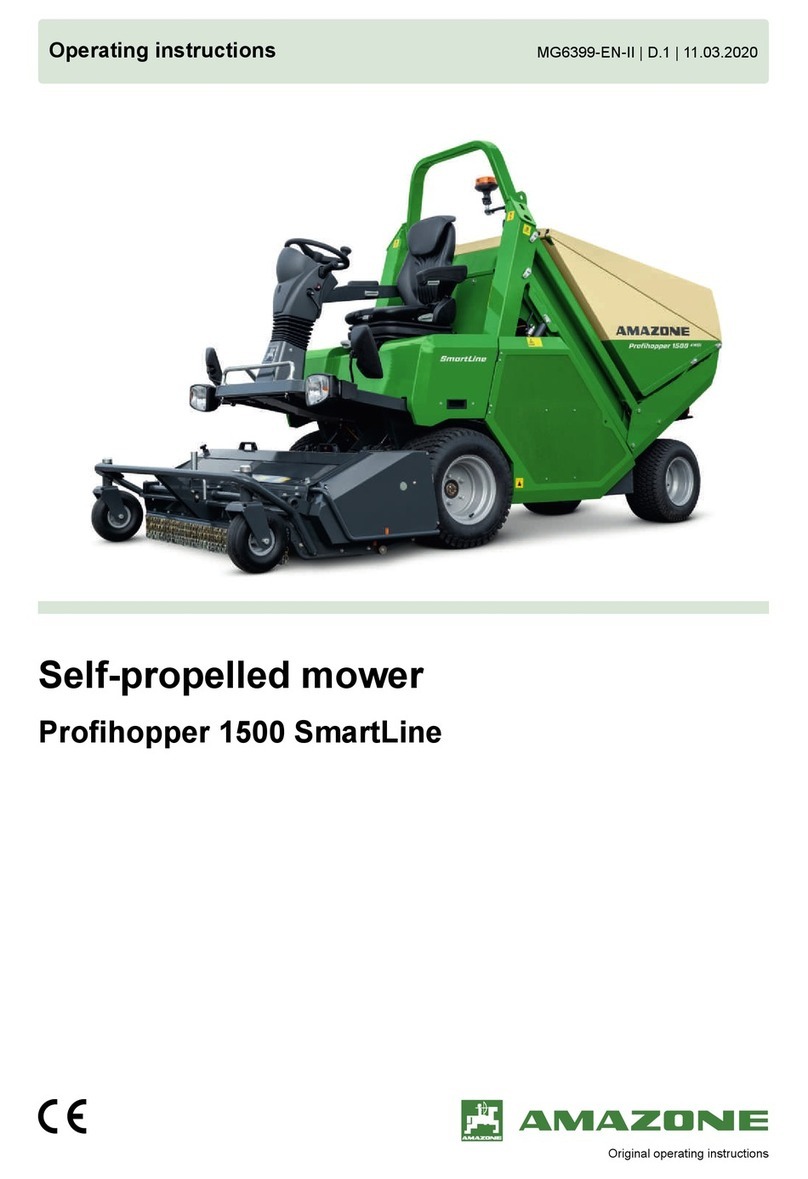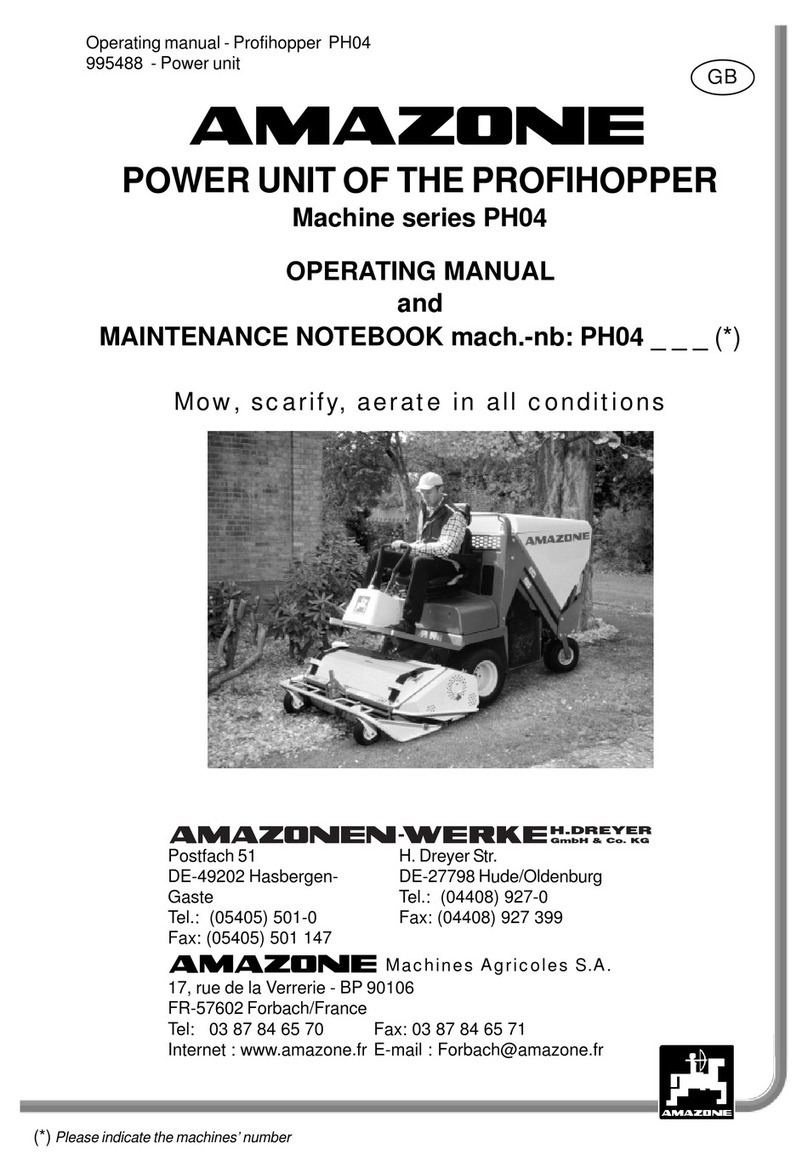
6.2.5 Adjusting the headrest 77
6.2.6 Adjusting the lumbar support 77
6.2.7 Seat heater 77
6.3 Adjusting the Primo XL driver's
seat 78
6.3.1 Selecting the longitudinal setting 78
6.3.2 Adjusting the backrest 78
6.3.3 Setting the driver's weight for the air
suspension 79
6.3.4 Adjusting the armrests 79
6.3.5 Adjusting the headrest 80
6.3.6 Adjusting the lumbar support 80
6.3.7 Seat heater 80
6.3.8 Adjusting the fore/aft isolator 81
6.4 Adjusting the armrest with
control panel 81
6.5 Adjusting the steering column 82
6.6 Checking the oil level 82
6.7 Refilling the engine oil 83
6.8 Checking the hydraulic oil level 83
6.9 Refilling the hydraulic oil 84
6.10 Checking the diesel fuel tank fill
level 84
6.11 Refuelling diesel 85
6.12 Checking the tyre inflation
pressure 85
6.13 Checking the blades and blade
mounts 86
6.14 Selecting the blades 86
6.15 Changing or replacing the blades 88
6.16 Installing the mulch flap 89
6.17 Removing the mulch flap 90
6.18 Adjusting the cutting height 90
6.19 Folding up the roll-over protection 91
6.20 Folding down the roll-over
protection 92
6.21 Coupling the trailer 93
6.22 Preparing the machine for road
travel 93
7Using the machine 95
7.1 Climbing on and off 95
7.2 Driving the machine 96
7.2.1 Using the seat belt 96
7.2.2 Starting the diesel engine 96
7.2.3 Switching off the diesel engine 97
7.2.4 Selecting the direction of travel 98
7.2.5 Accelerating 98
7.2.6 Braking 98
7.2.7 Applying the parking brake 99
7.2.8 Using cruise control 99
7.2.9 Using the warning beacon 100
7.2.10 Using the work floodlights 101
7.2.11 Using the lighting for road travel 102
7.2.12 Actuating the horn 103
7.2.13 Using the hazard warning lights 103
7.2.14 Using the windscreen wipers 103
7.2.15 Using the air conditioning system
and heater 104
7.2.16 Using the cab lighting 106
7.2.17 Using the sun protection blind 106
7.3 Using the implement 106
7.3.1 Starting mowing 106
7.3.2 Activating Eco mode while mowing 108
7.3.3 Stopping mowing 108
7.3.4 Mulching 109
7.3.5 Scarifying 109
7.4 Emptying the grass collector 110
7.4.1 Emptying the grass collector close
to the ground 110
7.4.2 High tip emptying the grass collector 110
7.5 Setting the Info display 112
7.5.1 Setting the language 112
7.5.2 Setting the clock 112
7.5.3 Toggling between normal mode and
job mode 113
7.5.4 Resetting the job mode counter 113
7.5.5 Resetting the maintenance interval 113
8Repairing the machine 115
8.1 Lifting the machine 115
8.2 Maintaining the machine 116
8.2.1 Maintenance schedule 116
8.2.2 Checking the engine coolant fill level 117
8.2.3 Cleaning the radiator 118
MG6399-EN-GB | K.1 | 19.10.2022 | © AMAZONE III
































